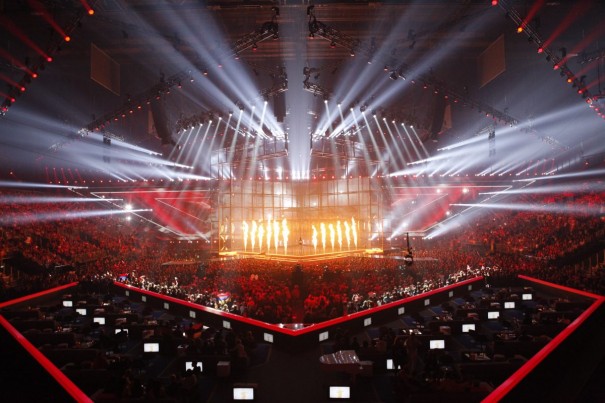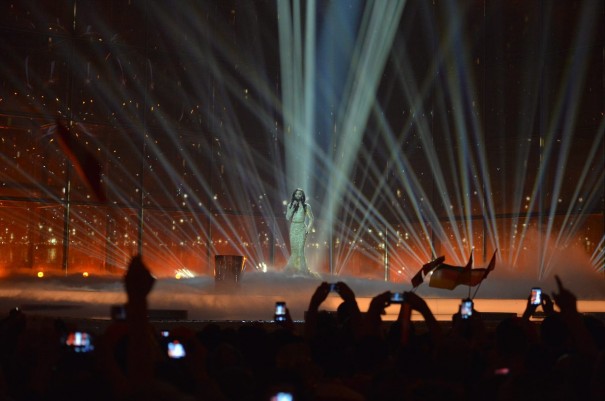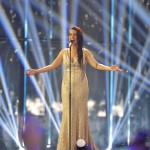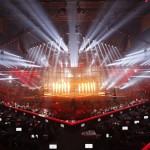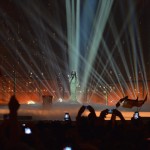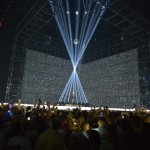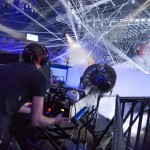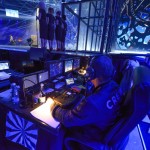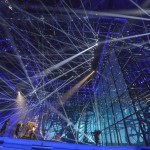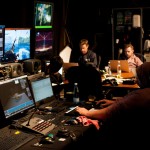Eurovision 2014: a display of light, projection, sound and pyrotechnics
En el B&W Hallerne Arena, los viejos astilleros en los que se desarrolló el festival, Eurovisión volvió a ser todo un escaparate tecnológico de luz, proyección, sonido y pirotecnia. En total, más de 700 personas entre cámaras, personal de producción y técnicos, han hecho posible uno de los mayores espectáculos audiovisuales del año con un presupuesto de 32 millones de euros.
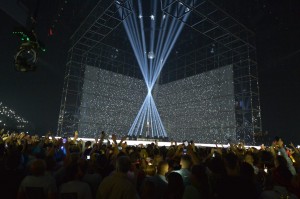 El Festival de la Canción de Eurovisión es, sin duda, uno de los mayores eventos internacionales de televisión del año, con participantes de todo el continente batallando por el título de mejor canción europea.
El Festival de la Canción de Eurovisión es, sin duda, uno de los mayores eventos internacionales de televisión del año, con participantes de todo el continente batallando por el título de mejor canción europea.
Cada edición se estima que la siguen 125 millones de espectadores en 56 países, incluida por vez primera este año, China. Organizado por la Unión Europea Radiodifusión (UER). Su red de contribución y distribución de señales, Eurovisión, es una de las más grandes del planeta combinando fibra y satélite y sirve, entre otros muchos acontecimientos, el propio festival.
Eurovisión distribuye la transmisión en vivo a través de satélite con una huella que cubre toda Europa y Oriente Medio. Esto significa que la señal sólo es necesario enviarla una vez, pudiendo a partir de ahora los broadcasters de todo el continente transmitir la señal en vivo para sus espectadores.
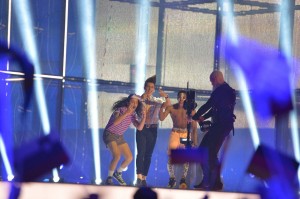 Pero quizás uno los aspectos más difícil del festival de Eurovisión sea el momento de las votaciones, ya que conlleva enlazar con envío y retorno todos los países participantes. Gestionar al milímetro la capacidad de su red resulta todo un reto para asegurar el momento de la popular votación.
Pero quizás uno los aspectos más difícil del festival de Eurovisión sea el momento de las votaciones, ya que conlleva enlazar con envío y retorno todos los países participantes. Gestionar al milímetro la capacidad de su red resulta todo un reto para asegurar el momento de la popular votación.
En el núcleo de su red , Eurovisión utiliza conexiones de fibra óptica de alta capacidad de Colt capaces de transmitir datos a 10 Gbps proporcionando una “tubería” de gran ancho de banda fiable que permite gestionar las contribuciones de toda Europa.
Sin embargo, cuando no hay ninguna interacción de dos vías entre los comentaristas en los diferentes países, la latencia se convierte en el gran problema. El satélite añade un retardo de tiempo, que puede llegar incluso a dos segundos, por lo que Eurovisión se ve obligada a jugar al mismo tiempo con la latencia sobre fibra para ajustar los canales de envío y retorno.
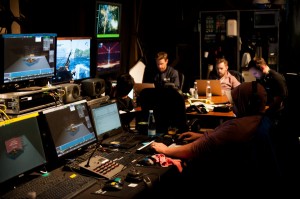 Un gran escaparate tecnológico
Un gran escaparate tecnológico
En cuanto al B&W Hallerne Arena, los viejos astilleros en los que se desarrolló el festival, Eurovisión volvió a ser todo un escaparate tecnológico de luz, proyección, sonido y pirotecnia.
Al frente de la dirección del festival estuvo Per Zachariassen, con Claus Zie en el diseño de la producción, corriendo con la retransmisión la radiotelevisión pública danesa DR.
Como ya viene siendo habitual, Riedel desplegó su tecnología de red para audio, vídeo, datos e intercom asegurando una cobertura completa en todo el recinto.
EVS se encargó un año más de servir los mejores momentos de la gala con sus sistemas de servidor XT3 y la suite IPDirector.
En los días previos a la gala, Best Broadcast empleó el software Just:Live de ToolsOnAir para enviar las entrevistas y comentarios recogidos entre el público congregado en el Copenhagen City Hall Plaza. Su motor de playout integrado proporciona una gran calidad y back-to-back playout de codecs mixtos, relaciones de aspecto y tamaño de píxel, sobre todo en lo que a la emisión de los videoclips se refería. El sistema también permitió incluir desde la unidad móvil gráficos en tiempo real.
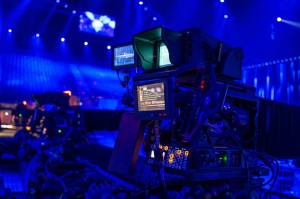 Desde el punto de vista de proyección, la organización del festival volvió a decantarse otro año por la tecnología de Barco, jugando como ya ocurriera en la pasada edición un papel destacados el proyector HDQ-2K40. Un total de 16 unidades HDQ se combinaron con 16 proyectores HDX-W20 para mostrar las imágenes más brillantes .
Desde el punto de vista de proyección, la organización del festival volvió a decantarse otro año por la tecnología de Barco, jugando como ya ocurriera en la pasada edición un papel destacados el proyector HDQ-2K40. Un total de 16 unidades HDQ se combinaron con 16 proyectores HDX-W20 para mostrar las imágenes más brillantes .
El escenario de Eurovisión 2014, presidido este año por un gran cubo de LED de 20×35 metros, constaba de 120 módulos con una superficie especial en LED para proyección, lo que permití la visualización de imágenes o animaciones. MediaTec fue la empresa encargada de la integración de la tecnología de Barco en esta configuración, tal como hizo el año pasado.
El escenario, diseñado por Claus Zier, tenía 20 metros de altura y 1.200 metros cuadrados, lo que lo convierte en el mayor nunca construido en la historia de Dinamarca. Para el levantamiento de la estructura, que recordaba a los astilleross, se emplearon 40 toneladas de acero forradas de 3.000 luces fluorescentes, 730 de LED, y una pantalla de policarbonato acrílico que permitía la proyección de las imágenes en cada una de las actuaciones. Es de destacar que el suelo era sensible al tacto por lo que las imágenes procedentes de los proyectores Barco podían interactuar con los artistas conforme caminaban por él.
En cuanto al audio, en el B&W Hallerne Arena, un sistema de PA de más de 11.400 kilos junto a 150 globos gigantes diseñados con 60.000 metros cuadrados de tela permitieron contar con un sonido cristalino en todo el recinto con un eco de apenas tres segundos.
Para la gala, la DR empleó veintidós cámaras. En total, más de 700 personas entre cámaras, personal de producción y técnicos, entre otros, han hecho posible uno de los mayores espectáculos audiovisuales del año con un presupuesto de 32 millones de euros.
Gallery
(click on any photo to start the carousel - scroll right and left by clicking on the arrow)
[youtube]https://www.youtube.com/watch?v=-OtuM3Zvkeo[/youtube]
Entrevista con Claus Zier, Production Designer de Eurovision 2014
[youtube]https://www.youtube.com/watch?v=CvbQeeCl_rM[/youtube]
Did you like this article?
Subscribe to our NEWSLETTER and you won't miss anything.



